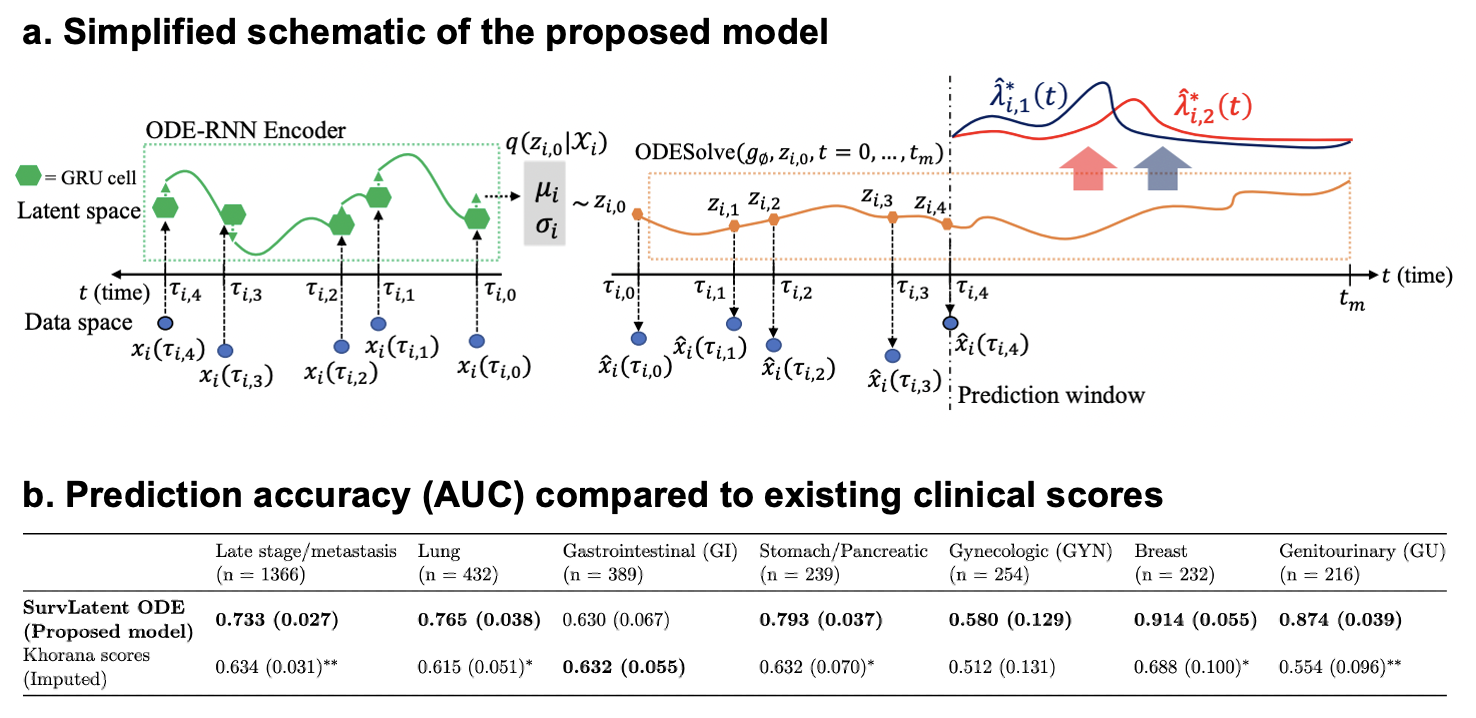Intae's SurvLatent ODE paper on multi-task survival prediction from longitudinal data is out (Moon et al. MLHC)! 🎉
We present SurvLatent ODE, a new method for multi-task time-to-event/survival prediction, in work led by Intae Moon now out in the proceedings to Machine Learning for Health Care, with source code and notebook examples.
SurvLatent ODE:
A Neural ODE based time-to-event model with competing risks for longitudinal data improves cancer-associated Venous Thromboembolism (VTE) prediction
Moon I, Groha S, Gusev A. 2022
SurvLatent ODE predicts time-to-event outcomes for individuals with longitudinal input data. This is a challenging problem when the input data includes irregularly collected patient covariates that change over time, multiple competing outcomes, and complex interactions between the features and the output. As the name implies, SurvLatent ODE leverages Ordinary Differential Equations and Recurrent Neural Networks to flexibly model longitudinal data, together with non-parametric estimation of survival functions for multiple competing outcomes, by inferring latent patient states. We apply SurvLatent ODE to multiple Real World datasets, including a unique study of cancer associated Venous Thromboembolism (VTE) at Dana-Farber (where patient history and competing risks are particularly relevant) and show that it outperforms the established clinical risk scores based on static features, as well as existing predictive algorithms. We are excited about the potential to apply this model to other complex clinical outcomes.
For more details, see the tweet-orial from Intae
